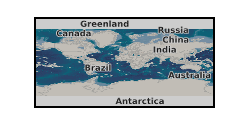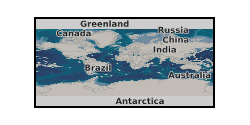Precambrian
Type of resources
Available actions
Topics
Keywords
Contact for the resource
Provided by
Years
Formats
Update frequencies
-

This dataset contains geochemical measurements which quantify the major and trace element concentrations of Precambrian (Proterozoic) and Paleozoic (541–251 Mya) mudstones. Sampled mudstones are listed under their formation name, with information on the locations of each outcrop belt and further details on lithological characteristics, including environment of formation, freely available on the British Geological Survey Lexicon of named rock units (https://www.bgs.ac.uk/technologies/the-bgs-lexicon-of-named-rock-units/) and Government of Canada weblex (https://weblex.canada.ca/weblexnet4/weblex_e.aspx), for UK and Canadian samples, respectively. Stratigraphic age is given in accordance to the GSA geological timescale v.5.0. Following sampling, specific methodologies for preparation for major and trace element analysis, conducted on an Agilent 5100, are provided in the Methodology. The data was collected to understand changes in weathering intensity coeval with the Paleozoic expansion of land plants. The major element data was needed to: 1) determine how much sample was required for subsequent Lithium isotope analyses (data from which are separately uploaded to the repository); and 2) to ensure similarity of source between samples compared across our study. The tabulated major element analyses were compared at different temporal stages of plant evolution through the Paleozoic. Samples were collected by the University of Cambridge. Major element data was obtained by William McMahon, and supervised by Edward Tipper and Mohd Tarique and Emily Stevenson.
-

Reflectance transformation image of a cast (BGS fossil reference number GSM106161) of the holotype of Charniodiscus concentricus. The original fossil is the property of the Geology Department, University of Leicester, and the fossil is on display at New Walk Museum, Leicester
-

Extant euglenids from cultures LM and SEM images of living euglenids and euglenids post acetolysis Fossil material (recovered by standard palynological analysis) LM, SEM and TEM images of fossil materials from:- (i) The Torridonian of Scotland (ii) The Nonesuch Formation of Michigan, USA (iii) The 'fish beds' of the Silurian Inliers of the Midland Valley of Scotland.
-

Rare earth element, major and minor element, and iron speciation data for nine independent sections in the Nama Group, described in detail in Wood et al., 2015, Precambrian Research, and Tostevin et al., 2016, Nature Communications. Additional data for Zebra River section include sulfur isotopes from carbonate associated sulfate (published in Tostevin et al, 2017, Precambrian Research); Uranium isotope data for carbonates (published in Tostevin et al., 2019, EPSL); Calcium isotope data for carbonates (unpublished).
 NERC Data Catalogue Service
NERC Data Catalogue Service